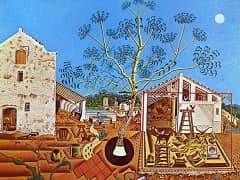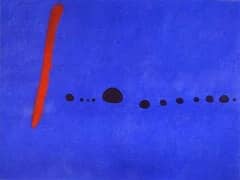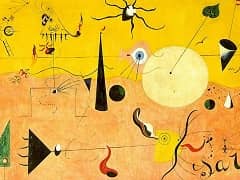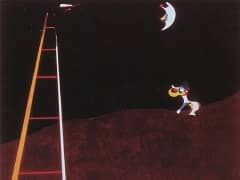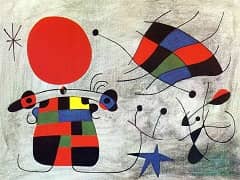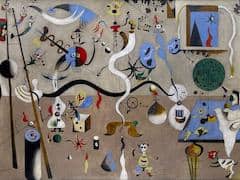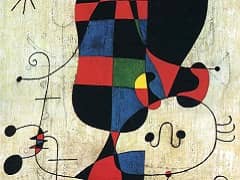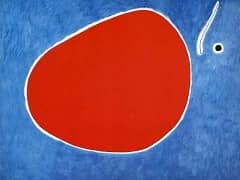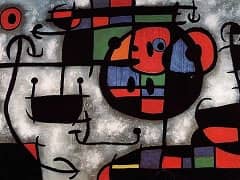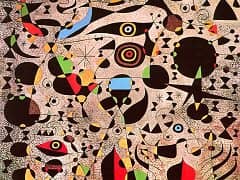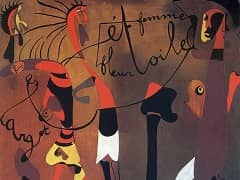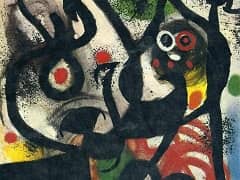Painting, 1933 by Joan Miro
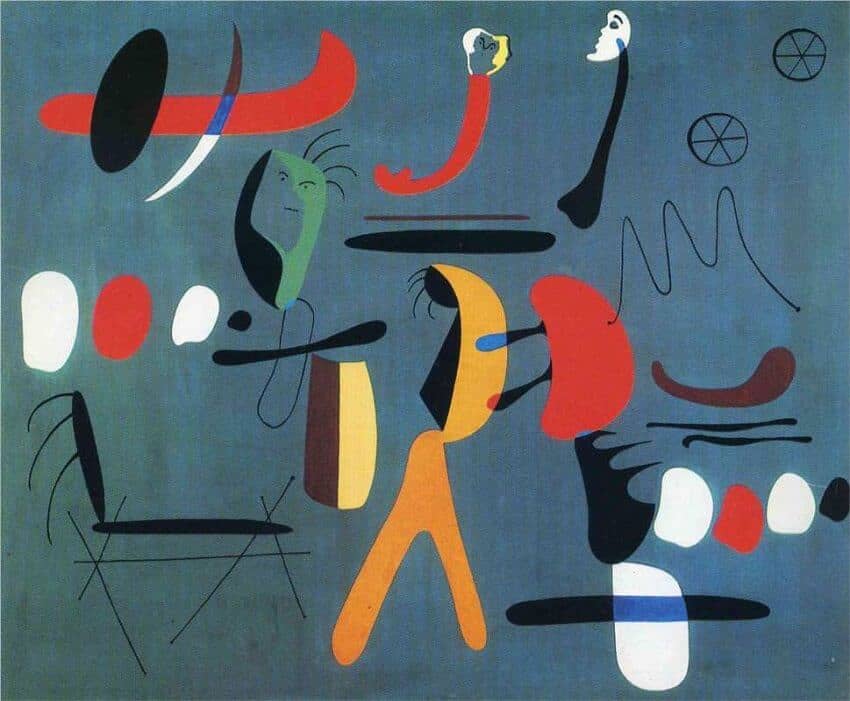
Once Miro had assimilated the advances of the Surrealists, he created his own iconography, paying special attention to the human figure. From 1929 to 1938 he produced a series of works, marked by
free and confident brushstrokes, in which flat colors and simple shapes reconstruct the world. Collage suggested to him new shapes that could be transferred onto the canvas. The backgrounds in this
period are often dark, perhaps a sign of the spiritual disturbance caused by the approach of war.
These two pictures, entitled Painting belong to a series of large, elegantly executed works that were originally based on several unusual collages - small cuttings from newspapers and
catalogues that show parts of machinery and everyday objects. This laborious way of preparing for the actual work itself may have been Miro's way of counter-balancing the impetuous spontaneity which
he had allowed in his "anti-art". Although the original contexts of the collage pieces can still be recognized in the final paintings, the pictures of the collages cannot.
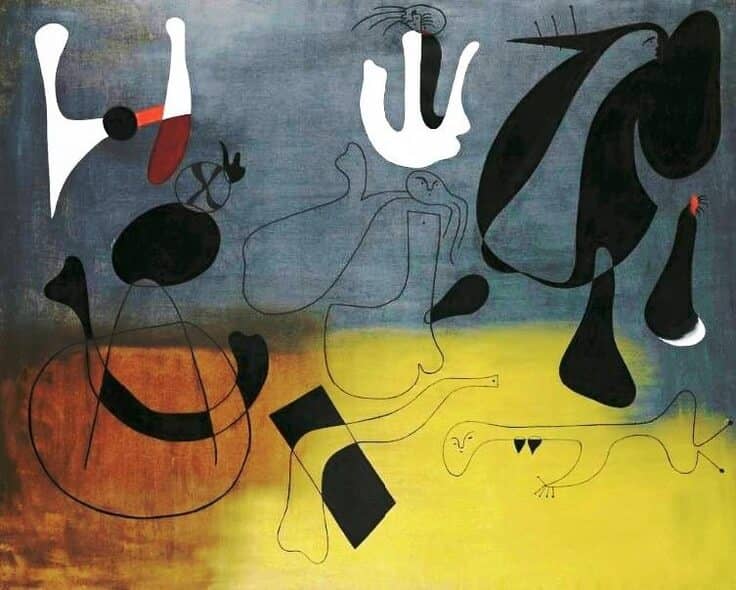
After cutting out die collage pieces, Miro changed them into abstract shapes with glowing colours. The colour shapes - now in sharp contrast with the surface - playfully harmonize in an unconstrained rhythmic pattern to which the linear symbols are also subject. Although this series of paintings was one of Miro's most abstract works, he refused throughout his life to be pigeon-holed as an abstract artist. For him even the most abstract pictures still express a tangible spiritual reality which is very much part of real life.

